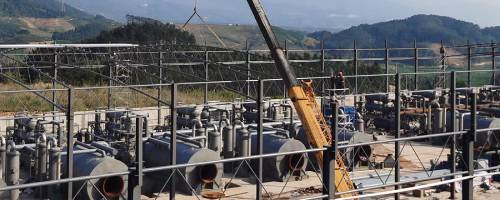Continuous automatic recycling tyre oil plant
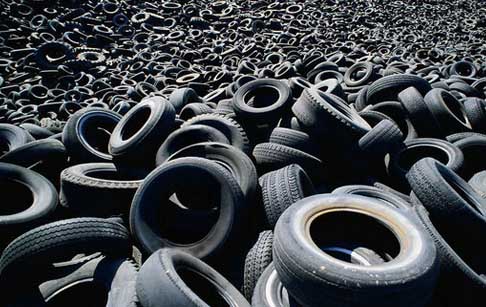
Waste tyre
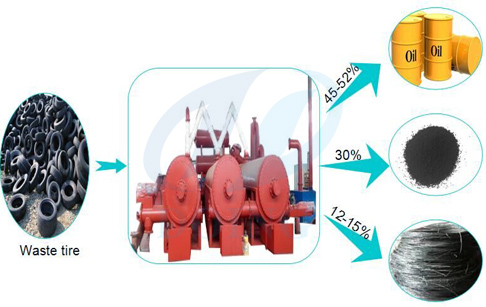
Continuous automatic recycling tyre oil plant
Through continuous improvement and constant technology upgrading, Doing have designed the continuous automatic recycling tyre oil plant which can convert tyre into useful resources more efficiently. This continuous automatic recycling tyre oil plant include DY-30, DY-50 and DY-50 and the daily processing capacities range from 30 to 50 tons.
Continuous automatic recycling tyre oil plant

Continuous automaic recycling tyre oil plant working process
As the photo shows, the ring cutter, tyre strip cutter and black cutter work together to firstly remove the tire bead and cut the left tire into rubber blocks, and then use steel wire separator to separate the steel wire out of the tire bead. The rubber blocks and the bead after steel wire separating will be used as raw material for our continuous waste tire pyrolysis plant. The steel wire got from the tire bead can be packaged and sold directly.
b.Heating in advance to make the temperature of the pyrolysis reactor rise up to about 300℃,fuel can be oil or gas, the heating is indirect heating by hot air produced by burners.
c.Turn on the auto-feeder, small tire pieces loaded into reactor and pyrolysis begins; when reach certain temperature the gas oil is generated from the waste tire.
d.Oil gas generated and condensed into fuel oil to be stored, sync gas recycled and used as fuel during operation; at the same time, carbon black and steel wires in short also discharged from the auto-discharge system. The steel metal and carbon black separated automatically and stored.
Continuous automatic recycling tyre oil plant feature
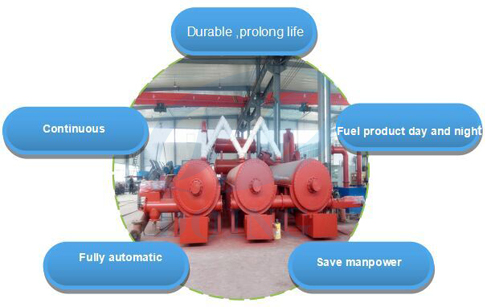
Continuous automaic recycling tyre oil plant feature
2.Automatic ejiecting wastes residue
3.Fuel product day and night
4.Safe operation ,save manpower
5.Production efficiency.improve efficiency
6.Durable ,prolong life
Continuous automatic recycling tyre oil plant
| No. | Item | Specifications | ||||||
| 1 | Model | DY-C-10 | DY-C-20 | DY-C-30 | DY-C-50 | DY-C-60 | DY-C-80 | DY-C-100 |
| 2 | Cpacity | 10T/D | 20T/D | 30T/D | 50T/D | 60T/D | 80T/D | 100T/D |
| 3 | Power | 35Kw | 50Kw | 65Kw | 80Kw | 90Kw | 105Kw | 120Kw |
| 4 | Working type | Continuous | ||||||
| 5 | Reactor deisgn | Mutiple reactors (The quantity and size depends on the raw material condition) | ||||||
| 6 | Rotating | Internal rotating | ||||||
| 7 | Cooling system | Recycled waster cooling | ||||||
| 8 | Reactor material | Q245R/Q345R boiler plate | ||||||
| 9 | Heating method | Indireact hot air heating | ||||||
| 10 | Heating fuel | Fuel oil/gas | ||||||
| 11 | Feedstock | Waste tire/plastic/rubber | ||||||
| 12 | Output | Fuel oil, carbon black | ||||||
Continuous automatic recycling tyre oil plant final product application
Fuel oil (45% to 52%)
The main oil product produced by our recycling application is the fuel oil that is wide used for industrial and commercial purposes. The oil has 45% to 52% of the amount of recycled scrap tyres, which will be carried with licensed tanker trucks.
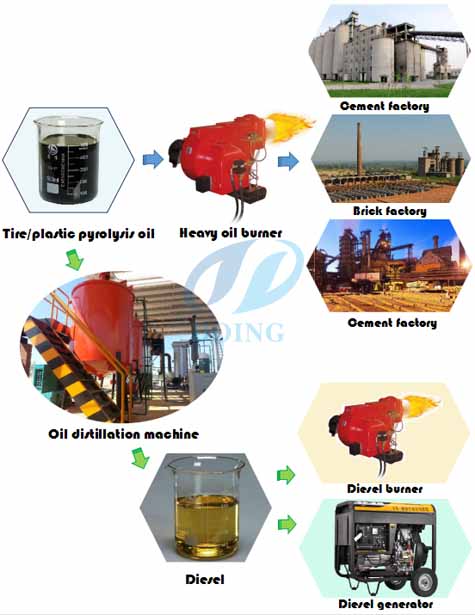
Fuel oil application
Carbon Black is the main product recycled by Pyrolysis technology. The amount of recycled carbon black is 30% to 35% (depending on the type of tyres) of the total amount of scrap tyres recycled in the system. Carbon black is used as raw material or main ingredient in many industries and the chemical structure of carbon black strengthens, lengthens the endurance, and improves the coloring features of the materials.
Carbon black produced by Pyrolysis process (CBp) is more economical compared to carbon black produced primarily from petroleum and is more price-efficient to be used as an ingredient in the industries listed;
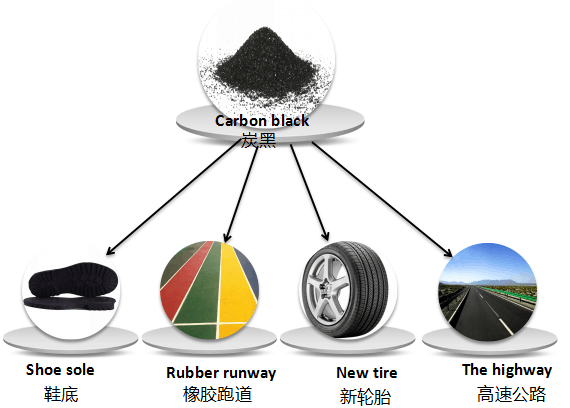
Carbon black
* Conveyor band
* Carrier Bands
* Hose and doormat
* Black nylon bag
* Rubber additive
* Automotive spare parts
* Heat isolation
* Black colorant in rubber materials
* Plastic pipes
* Industrial rubber products
* Fire fighting
Steel wire (10% to 15%)
Tyres contain steel wires and the amount range of 10% to 15% of the total tyre wastage. All of the steel present in the tyre can be detached after pyrolysis recycling process in completed. Valuable steel wires are pressed and sold to steel and scrap dealers.
GAS (10% to 12%)
Non-Condensable gases arise during the pyrolysis process.
Some advantages such as…..
* It has higher calorific value as compared to Natural Gas.
* It can be replaced where Natural Gas and Propane are stored.
* The high energy gas may be utilized as a source of energy for the Pyrolysis process.
* The amount of gas generated in the system is 12% to 15% of the total amount of recycled tyres and considering the 10 ton scrap tyre/day recycling capacity, the facility generates 1200-1500 m3/day gas, which has an enormous energy potential when evaluated.
Request Information
Send your inquiry for further information




